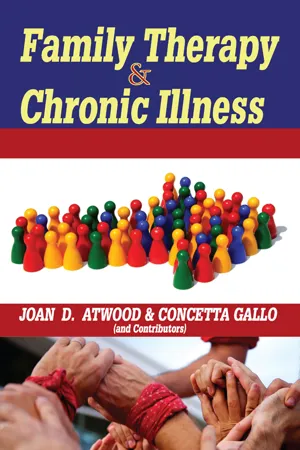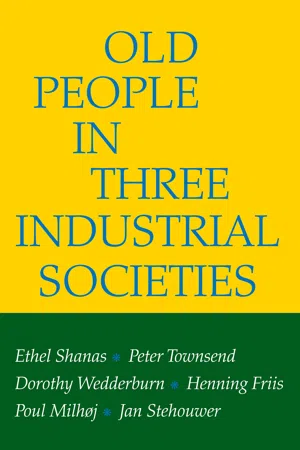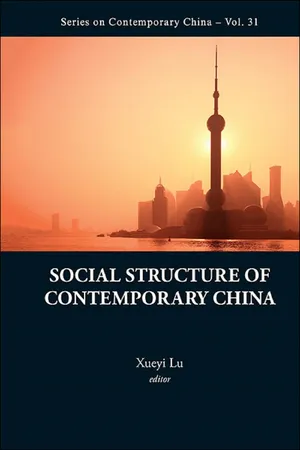Social Sciences
Changes in Family Structures
Changes in family structures refer to the shifts in the composition and organization of families over time. This can include changes in marriage patterns, divorce rates, cohabitation, and the prevalence of single-parent or blended families. These changes are influenced by various social, economic, and cultural factors, and have significant implications for individuals and society as a whole.
Written by Perlego with AI-assistance
Related key terms
6 Key excerpts on "Changes in Family Structures"
- eBook - ePub
Multi-generational Family Therapy
Tools and resources for the therapist
- Maurizio Andolfi(Author)
- 2016(Publication Date)
- Routledge(Publisher)
3 SOCIAL TRANSFORMATION AND NEW FAMILY FORMSThe history of humanity presents an inexhaustible repertoire of ways of organizing and attributing meaning to reproduction and to sexuality, to the alliance between groups and individuals, and therefore, an infinite variety of ways of building families. Sociological, demographic and psychological studies and research have clearly identified the range of family models that have always characterized human societies, highlighting how the family assumes different functions and structures, supporting and nurturing itself through different economic systems. The transition from the patriarchal family of the rural world, extended and economically self-sufficient, to that of the nuclear family of the industrial era is a significant example of this variability. Over the past 50 years, the family has undergone a process of radical transformation in its structure, demographic configuration, and internal and social roles, to assume gradually greater complexity and differences, and even more dramatic fragmentation, to such an extent that today it is impossible to refer to the family as a standard unit. We are faced, instead, with a multiplicity of family configurations characterized by increasing complexity and progressive fragmentation, described by Golombok (2015) as modern families. - eBook - ePub
- Ken Browne(Author)
- 2019(Publication Date)
- Polity(Publisher)
Changes in the pattern of divorce- Remarriage and the growth of reconstituted (blended or step-) families
- The growth of the lone-parent family
- Changing patterns of marriage and cohabitation
- More births outside marriage
- Living alone: the growth in singlehood and one-person households
Social change and relationships inside the family- Is there a new ‘symmetrical family’ emerging?
- The changing position of children in the family
- The role of grandparents in families
A summary of changes in familiesCritical views of the family: the darker side of family life- The abuse of children
- Domestic abuse
- Explanations for domestic abuse and violence
Chapter summary and revision checklistKey termsKEY ISSUES
- What is the family?
- Different forms of family, marriage and household structure
- Alternatives to the family
- Consensus and conflict theories of the role of the family in society
- Family and household diversity
- Social change and family types, structures and relationships
- Social change and relationships inside the family
- A summary of changes in families
- Critical views of the family: the darker side of family life
The family unit is one of the most important social institutions, which is found in some form in nearly all known societies. It is a basic unit of social organization, and plays a key role in socializing children into the culture of their society, and forming their identities – how they see themselves and how others see them.Most people are raised in families, and so we might think we know all about them. We may make assumptions that people will fall in love with someone of the opposite sex and get married, start having children, and form their own family. We may have the impression that the ‘best’ kind of family consists of parents and a couple of children, with Dad out working and Mum always available for looking after the kids, but with both partners sharing a lot of jobs around the home. We may believe the family is the only place where children can be properly brought up, and that it is a source of unconditional affection – a place to retreat to whenever things get too much or go wrong in the outside world. - eBook - ePub
Family-School Links
How Do They Affect Educational Outcomes?
- Alan Booth, Judith F. Dunn(Authors)
- 2013(Publication Date)
- Routledge(Publisher)
ceteris paribus, be more conducive to student achievement. At the same time, however, a reduction in the number of siblings may, under some conditions, be unfavorable to intellectual development. Some theorists point to the capacity of children to learn from their older siblings and to learn by serving as teachers to their younger siblings (e.g., Zajonc, 1976). Although the empirical support for these types of mechanisms is limited (Retherford & Sewell, 1991), they are nonetheless potentially important aspects of family change.2. Family structure includes not only the marital statuses of adult members of the family but also their patterns of work and time allocation more generally. A dramatic change in the lives of children during the past five decades has been the increasing proportion of mothers who are employed. Changes in the amount of time that mothers devote to paid work as well as the quality of employment that they experience have changed the character of early child care that is provided, the amount of direct parental supervision that children receive, and the quality of interaction between mothers and children. The cross-section and longitudinal effects of these factors on child development and student achievement are complex and do not point unambiguously to either a favorable or an unfavorable trend in educational outcomes (Parcel & Menaghan, 1994). They are nonetheless a key aspect of family change in recent decades.3. Among households that include married couples, family structure also en-compasses patterns of assortative mating between men and women with varying socioeconomic characteristics. Parental resemblance on socioeconomic characteristics has a major effect of the level and range of cultural and socioeconomic environments that a child experiences. At the individual level, children whose parents are both highly educated and hold well-paying jobs are clearly more advantaged than children who have only one parent with these characteristics (and, of course, compared to children who have only one parent at all). At the aggregate level, moreover, tighter resemblance between spouses increases the inequality in family environments across children from more and less socioeconomically advantaged families. As I noted previously, inequality depends on not only the variance of parental characteristics but also the degree to which several parental characteristics are associated. During the past five decades, there has been a significant increase in the association between mothers’ and fathers’ educational attainments, owing to trends in age at leaving school, age at marriage, and women’s employment (Mare, 1991). For mother–father families, this trend has altered the socioeconomic structure of families and, ceteris paribus, augurs increasing educational inequality in the next generation.2 - eBook - ePub
- Joan Atwood(Author)
- 2017(Publication Date)
- Routledge(Publisher)
in the ways people think about and evaluate the institutions of marriage and family—changes in the cultures people draw from and use in their own lives and how they evaluate others’ lives. These changes have taken many forms.The changes consistently identified by both social scientists and historians include: the decline, relative to mid-twentieth century, in the exclusive role of woman-as-homemaker and the movement of women into the labor force. These two facts are clearly related, although in complex ways, to rising divorce rates, single-parent households, and to changing relations of couples with respect to the meanings of marriage, sex, and gender roles. These changes—so important to our understanding of family change—also point to a more general movement of Americans away from the authority of both men (husband/father) and parents (both men and women) to a more democratic or egalitarian (“individualist”) marriage and family structure, what Anthony Giddens (1992) has described as a “democratization of the personal sphere,” a greater elaboration of individuality in intimate relations and in marriage and family life. In many important ways, the change from “the family” to “families,” from a single standard of marriage and family life to a recognition and acceptance by many of diversity in marriage and family life, is part of a number of cultural changes in American life today that include rising expectations about intimacy and sexuality, together with a sense of “choice” in matters of sexual identity, marriage, divorce, and parenting (Coontz, 2005, chap. 16; Cherlin, 2008a, chap. 15; Cancian, 1987, chap. 3). Marriage, to take one important example, is increasingly viewed as a matter of one’s own choice, a feature of one’s self-identity, and a means of self-fulfillment In sociological terms this means that marriage is no longer seen as an institution as much as a “relationship” between equal partners seeking intimacy and fulfillment Similarly, the willingness of most Americans to accept the rights of others to live their own lives—including those with whom they might disagree on issues of sex, marriage, and family—reflects the relatively new and widespread idea that marriage and family life is about “choice”—freely chosen arrangements for living (Cherlin, 2008a, p. 502; cf. Cherlin, 1999). Put differently, over the last half century, marriage and family have become increasingly viewed as human enterprises or creations, albeit with important symbolic and individual value, but no longer as social and religious facticities - eBook - ePub
- Ethel Shanas, Peter Townsend, Dorothy Wedderburn, Henning Kristian Friis, Poul Milhoj, Jan Stehouwer(Authors)
- 2017(Publication Date)
- Routledge(Publisher)
Chapter 5 ). Third, they show that the structure of the kinship network has been changing more radically than has been supposed. And, fourth, they show that this has had its inevitable repercussions on both family and social organization.As a consequence the structural determinants of changes may have been underestimated and the economic and educational determinants overestimated. Changes in family organization and relationships may have been affected less by changes in industrial and economic organization, occupational recuitment, and educational selection and organization and more by changes in population structure. Specific changes in birth and mortality rates, size of family, marriage rates, and age of marriage may have had a more pervasive effect than we have realized hitherto. If this conclusion is correct, then theories of the process of urbanization and of the social effects of industrialization may need to be revised.Summary
The main theme of this chapter is that family structure is a crucial analytic variable in understanding social organization and relationships and therefore individual processes of aging.First, the structural characteristics of the families of old people in the three countries can be described. Nearly half the elderly population in Denmark and the United States, and just over half in Britain, are single or widowed. Nearly a fifth in the former countries, and nearly a quarter in the latter country, have no surviving children. Rather more old people in the United States than in Denmark or Britain have six or more children but in each of the countries from two-fifths to a half of those with children have only one or two. One of the interesting features of family structure is the large proportion who have children of one sex only. Apart from the fifth to a quarter of the elderly who have one son only or one daughter only, around another fifth have two or more sons or two or more daughters only. The vast majority of those with children have grandchildren, and more than a fifth in Denmark and Britain and more than two-fifths in the United States have great-grandchildren. The fact that the four-generation family is already a common phenomenon in industrialized societies is one of the more surprising results to emerge from the cross-national survey. - eBook - ePub
- Xueyi Lu(Author)
- 2012(Publication Date)
- WSPC(Publisher)
From the modernization process, we can see that the higher the level of industrialization and modernization, the more apparent the miniaturization tendency of families becomes. From changes in China’s current family structure, especially changes in the family structure in major cities, we can observe a similar trend. Thus, it can be expected that the miniaturization and diversification of Chinese families will continue. Future Chinese family structures will experience the following changes: the nuclear family will keep its position as a main form of family structure; the stem family will continue to exist; the number of mobile and drifting families, intergenerational families and separated families will tend to reduce gradually along with urbanization; empty nesters and single-parent families will occupy a considerable proportion and develop slowly; the portion of DINK families will grow slowly; joint families will disappear gradually; non-marital family forms will become more complex and the number will be larger, possibly involving youth trial marriage, extra-marital cohabitation among the middle-aged, widowed elderly persons living together and homosexual cohabitation.3.2.Policy Recommendations in Response to Changes in Family Structure
Based on the analysis of the changes in family structure, we can see that family structure and social structure are very closely related; family structure is a reflection of the changing social structure and at the same time has an important impact on the reconstruction of the social structure. Thus, in order for the family structure to better suit the modern social structure, we make the following suggestions according to the social development trends and in response to the problems brought about by the change in family structure.3.2.1.Give Full Play to the Pension Function of Family, Community and Society to Cope with the Old-Age Care Challenge of Empty-Nest Families
In the current situation of China, neither the family, government nor society as a whole can take on the task of old-age care alone. Thus, a tripartite effort is needed to deal with the pension problem. In major cities with developed economies and abundant social resources, we should actively explore a joint pension system combining the family and social pensions. Communities should integrate existing resources to enhance service functions for the elderly. Families can adopt a combined family (young couple and the two pairs of parents live separately but in close proximity and take care of each other while having personal interactions in their daily lives) or a wavering family model (young couples shuffle between homes of the two pairs of parents and have their own bedrooms at both houses or have their own separate residences) to enhance parentchild inter-generational exchanges, thereby strengthening the family’s pension function. In rural areas, especially in remote rural areas, elderly care may explore a village-community-based pension model, capitalizing on villages’ advantages in terms of cultural background, family contact and community supervision function, among others. Other options include the integration of the one-child family elderly subsidy system, the existing rural poverty relief, the “five guarantees” system and the rural cooperative medical care system as well as other resources in order to establish a standard and sustainable old-age security system. In addition, we need to strengthen the construction of the social welfare pension agency, ensuring that elderly people who need institutional care can be taken care of properly. This is not just a useful supplement to the family and social endowment insufficiency; it also reflects the degree of a society’s development.
Learn about this page
Index pages curate the most relevant extracts from our library of academic textbooks. They’ve been created using an in-house natural language model (NLM), each adding context and meaning to key research topics.





